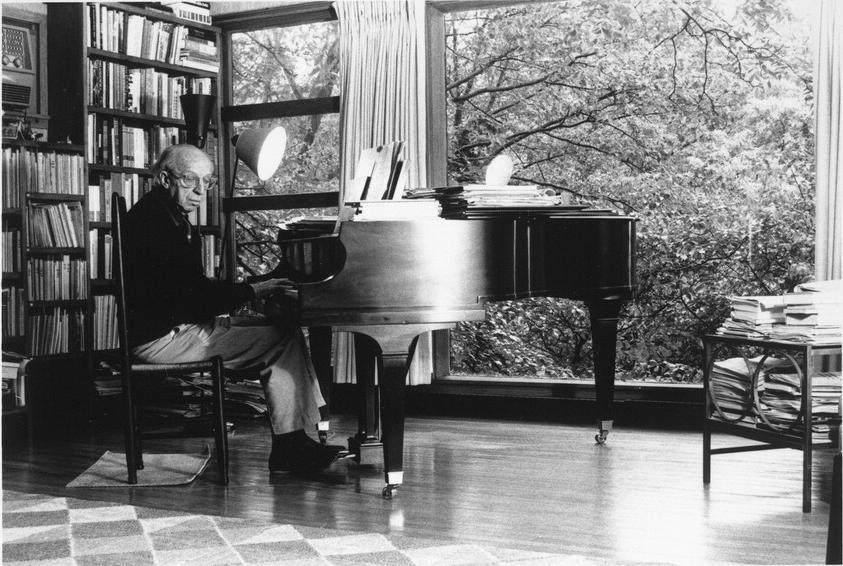While Wolfgang Amadeus Mozart’s “Eine Kleine Nachtmusik” and Erik Satie’s “Gymnopédies” soothe you to sleep, this playlist will rock your world with the sheer power and scope of the symphonic orchestra.
From Guiseppe Verdi to Aaron Copland, some of the best classical music features the loudest chords, the wildest rhythms, the hottest passions and the sickest characters. Demonstrating some of the most monumental textures and achievements in classical music, these songs will make you think twice about your opinion of classical music.
Giuseppe Verdi — “Requiem: II. Dies irae”
With its spectacular instrumentation, flying woodwinds and soaring choirs the “Dies irae” from Verdi’s legendary “Requiem” demonstrates the sheer power of one of the most iconic orchestral openings of all time. For funeral music, Verdi pulls out all the stops.
Aaron Copland — “Four Dance Episodes from Rodeo: IV. Hoedown”
Copland made a career of taking American folksongs and making them into orchestral masterworks, and the rollicking “Hoedown” from “Rodeo” is one of the most well-recognized examples of his style. Credited with branding American classical music, Copland masterfully lets the full orchestra go wild.
Arturo Márquez — “Danzon No. 2”
Perhaps no other classical piece matches the passion and sexiness of Márquez’s greatest hit, “Danzon No. 2.” From its sweeping strings and blazing woodwind solos to its brassy fanfares and dancing syncopations, “Danzon No. 2” creates an amazing and palpable energy in each performance that makes you want to get up and dance.
Pyotr Ilyich Tchaikovsky — “1812 Overture”
Considering Tchaikovsky literally asked for church bells and cannons in the score for his “1812 Overture,” it’s almost impossible to make a playlist without including it. Written to celebrate the anniversary of Russia’s siege against Napoleon’s forces, the celebratory magnificence of the piece is alive today in each subsequent performance.
Igor Stravinsky — “The Rite of Spring Part II: The Sacrifice: Glorification of the Chosen One”
When this piece premiered in Paris in the spring of 1913, it was greeted with one of the most infamous riots in the history of classical music. Stravinsky’s most daring and influential masterpiece, “The Rite of Spring,” tells the story of a primal tribe in pagan Russian and their sacrifice of a beautiful virgin to appease their gods. “Glorification of the Chosen One,” with its ever-changing rhythms and dramatic flair, represents the most difficult and diabolical movement in Stravinsky’s most notorious work.
Gustav Holst — “The Planets: Jupiter, the Bringer of Jollity”
If you’ve ever wondered where John Williams learned all his tricks, you need only look at the great orchestral composers, and Holst is central in the development of Williams’ style. Soaring into the ears of its audiences, “Jupiter, the Bringer of Jollity” from Holst’s “The Planets” is phenomenal and inspirational.
Sergei Rachmaninoff — “Études-Tableaux, Op. 39: No. 6 (Red Riding Hood)”
Pianist Valentina Lisitsa brings a delightful charm to one of the most programmatic of Rachmaninoff’s etudes. By showing Red Riding Hood running from the wolf in this wildly difficult piece, Rachmaninoff and Lisitsa demonstrate the fullest capabilities of solo piano music.
Edvard Grieg — “Peer Gynt Suite No. 1: In the Hall of the Mountain King”
Featured in god knows how many different commercials, films and TV shows, Grieg’s “In the Hall of the Mountain King” is one of the most recognized pieces of classical music ever written. The best possible finale to the playlist, this classic from “Peer Gynt Suite No. 1” has been captivating its audiences for generations.
Follow Kincaid Rabb on Twitter.









